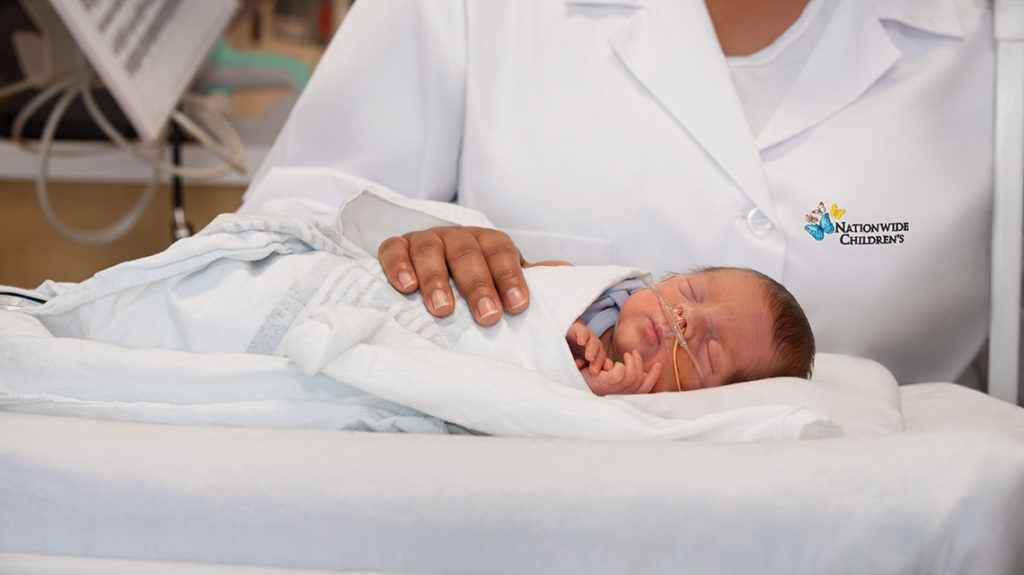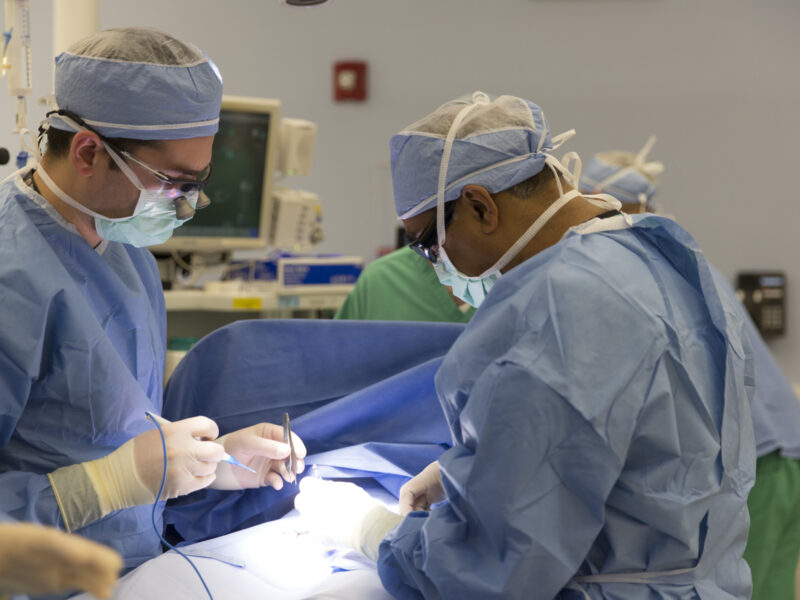Safe, Minimally Invasive Upper Urinary Tract Surgery for Infants
Safe, Minimally Invasive Upper Urinary Tract Surgery for Infants https://pediatricsnationwide.org/wp-content/uploads/2021/01/013019BS2257_c._header-1024x575.jpg 1024 575 https://secure.gravatar.com/avatar/?s=96&d=mm&r=g
Evidence supports robotic surgery as a safe approach to upper urinary tract procedures in infants 6 months or younger.
While robotic surgery has risen in popularity and feasibility for procedures in both older children and adults alike, there has been little data to determine whether it’s a safe possibility for young children and infants. But now, researchers at Nationwide Children’s Hospital have published evidence supporting robotic surgery as a safe and feasible vehicle for upper urinary tract procedures in infants 6 months and younger. Alex Carsel, MD, is one of the researchers who was inspired to connect the utilization of robotic surgery to pediatric urology.
“The field of urology is increasingly implementing the use of robotic platforms due to their advantages over conventional laparoscopic and open approaches. Namely, the enhanced dexterity and smaller incisions offered in comparison to laparoscopic and open approaches, respectively. As these factors are advantageous for both provider and patient, our team was inspired to expand these potential benefits to patients less than six months old,” Dr. Carsel says.
The study, which was published in the Journal of Robotic Surgery, took place over the course of five years, with three surgeons performing procedures on 12 different patients (average age 4.75 months; average weight 7.09 kg). Procedures included a variety of upper urinary tract interventions, such as pyeloplasties, ureteroureterostomies, heminephrectomy and nephrectomy. Nationwide Children’s surgeon-researchers defined success as not needing an unplanned second intervention at the time of the last follow-up, as well as improved or stable hydronephrosis (in patients who underwent reconstructive surgeries).
All patients recovered from their robot-assisted laparoscopic surgery (RALS) without the need for any open or secondary interventions. Additionally, all patients undergoing reconstructive surgery saw improved hydronephrosis in their postoperative ultrasounds. With the youngest and lightest patient weighing in at 4.2 kilograms at only 7 weeks old, this study concludes that robot-assisted laparoscopic surgery (RALS) is a safe and feasible option for children weighing more than 4 kilograms.
“We hope to encourage urologists to consider offering surgical robotic approaches to patients as young as four months of age who are affected by certain urologic conditions. We have demonstrated in our largest case series in children this young to date that complication rates and long-term surgical success are comparable, if not superior, to open or laparoscopic approaches. Lastly, although the small body habitus of infants this young raises concerns for adequate trocar placement, our study successfully utilized 8-mm robotic arm instrument ports in all cases without intraoperative complication,” says Dr. Carsel.
The authors note that this study can be utilized as a foundational tool for further research on the incorporation of RALS within different pediatric populations, as there are still opportunities to confirm findings. While about a third of patients experienced febrile urinary tract infections (UTI) following operation, these patients also had ureteral stents. Since all observed complications occurred within patients who had stents, the authors suggest that the presence of a foreign body most likely increases risk for UTI and should be left in for the shortest possible time.
The study’s results show that more procedures may be considered for a robotic approach, despite cost being a potential barrier.
“The biggest takeaway from this study is that robot-assisted laparoscopic surgery in our youngest and smallest patient population affected by urologic conditions is accomplishable and safe. It is also important to keep in mind that while the cost associated with robotic approaches is oftentimes a barrier, studies evaluating the direct costs of robotic surgery in infants tend be similar to that of open approaches. Maximizing operating room efficiency and training of ancillary staff is paramount to keeping costs comparable. Our hope is that this early work sparks interest for larger multi-institutional studies involving larger cohorts to further validate these findings,” Dr. Carsel says.
Reference:
Carsel AJ, DaJusta DG, Ching CB, et al. Robotic upper tract surgery in infants 6 months or less: is there enough space? J Robot Surg. 2022;16(1):193-197.
Image credit: Nationwide Children’s
- Posted In:
- Clinical Updates
- In Brief
- Research





